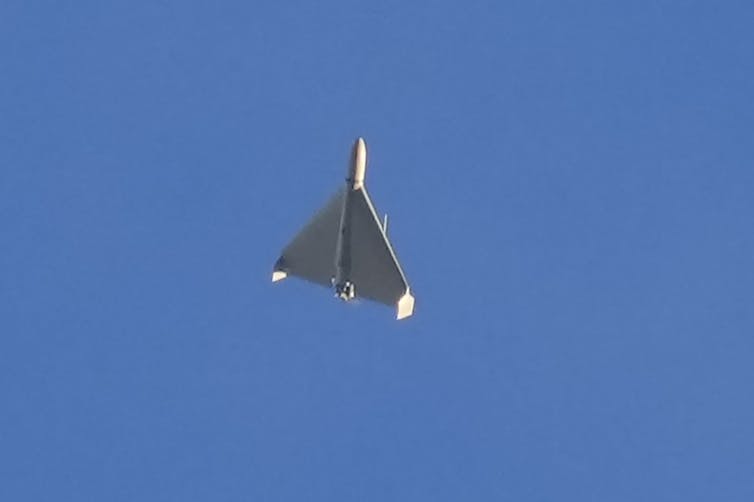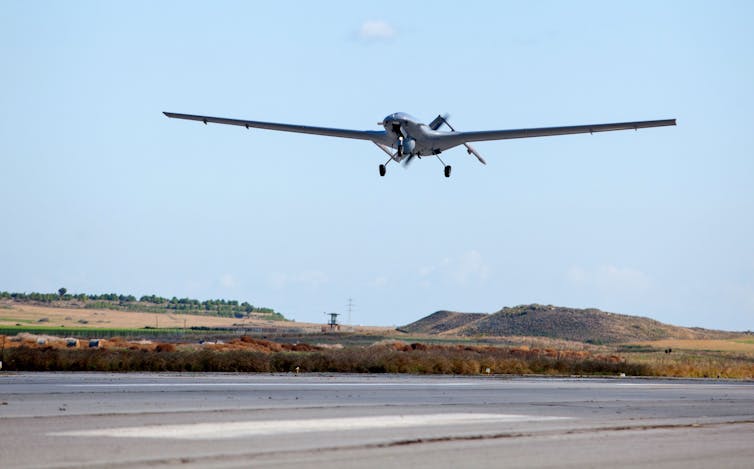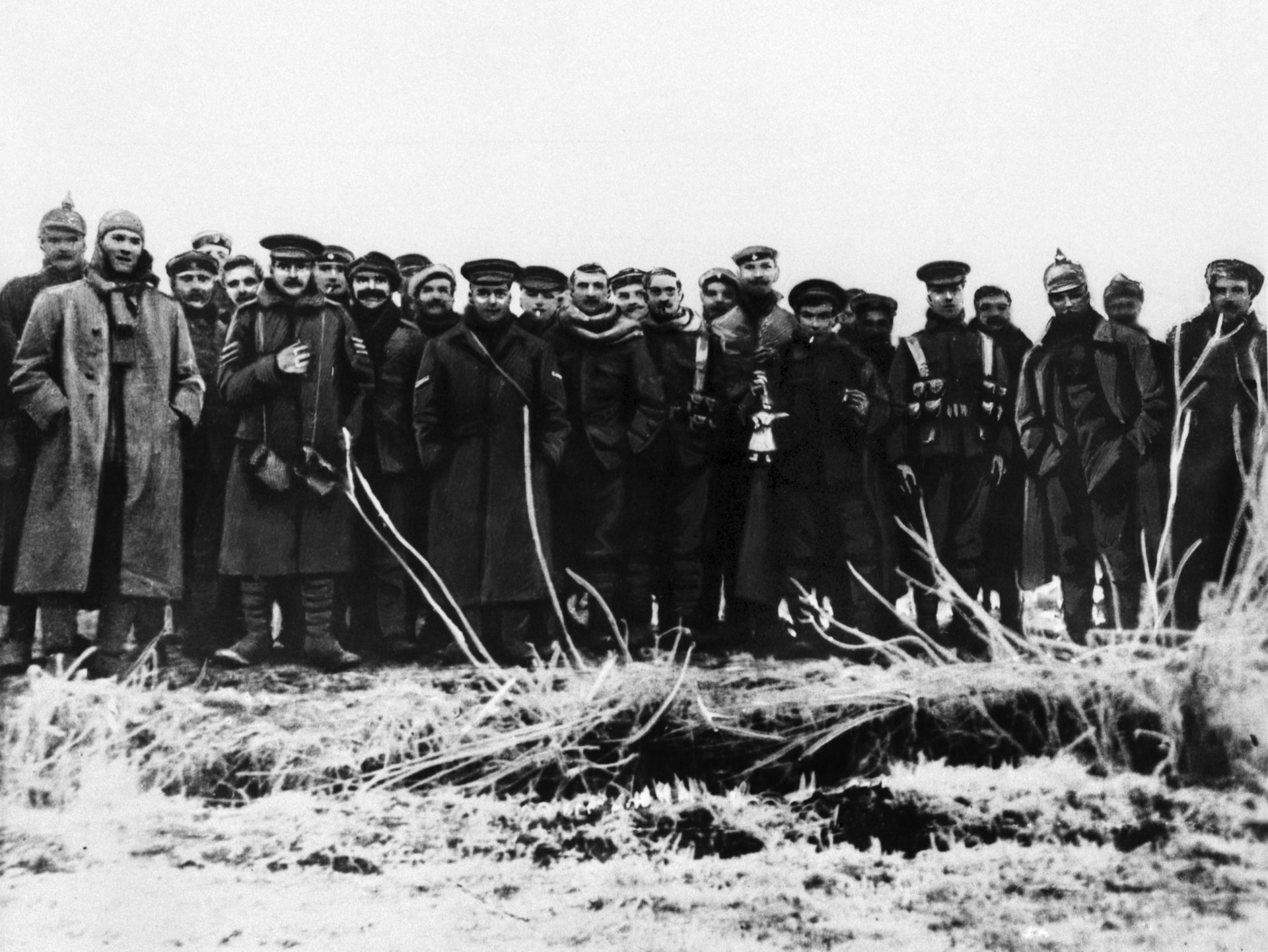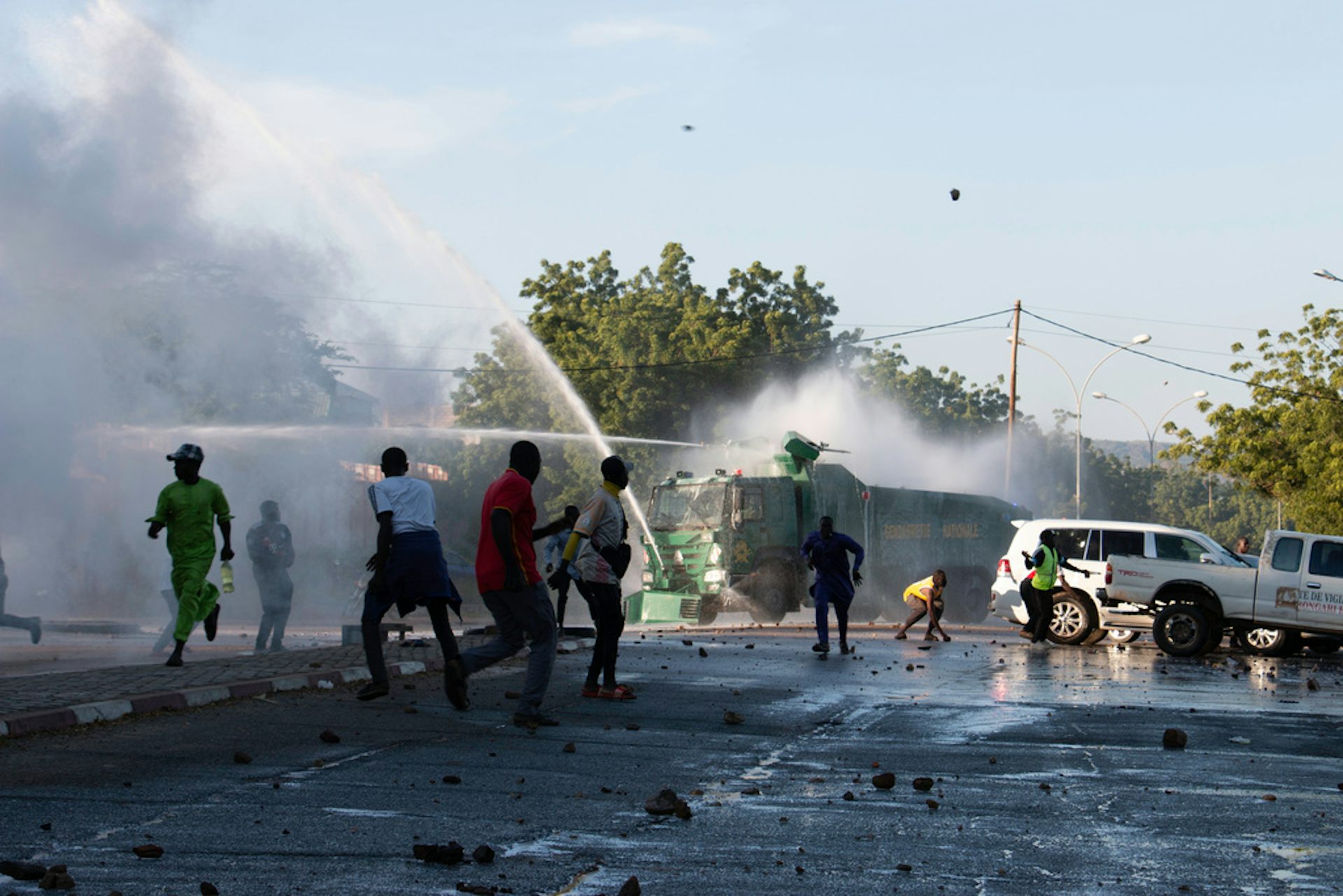Drones over Ukraine: What the war means for the future of remotely piloted aircraft in combat
The war in Ukraine has dramatically increased the use of drones in warfare, from repurposed consumer quadcopters to flying bombs to remotely piloted warplanes.

Over the past year, images from Ukraine have often portrayed a war resembling other conflicts from the past half-century. Russian forces deploy tanks, fighter planes, warships, amphibious vehicles and attack helicopters. Ukrainians fight back with anti-tank weapons, grenade launchers and anti-aircraft missiles. This is how much of the war appears on the ground.
But there’s another side to the conflict – a hypermodern battleground where drones play a crucial role in surveillance, reconnaissance and combat missions. These technologies may foreshadow a world in which armed conflicts are conducted largely by remote control – and perhaps someday, by artificial intelligence.
What lessons does the drone war in Ukraine hold for the future?
Commercial and portable drones
One lesson is that drones have been democratized, accessible to anyone with a few hundred dollars and a bit of technical knowledge. In Ukraine, DIY hobbyists have modified and weaponized small, inexpensive commercial drones by outfitting them with high-resolution cameras and explosives.
Ukraine’s Aerorozvidka air reconnaissance unit made headlines early in the war when its drones helped stop a Russian convoy headed for Kyiv. Aerorozvidka personnel use spiderlike hexacopters, octocopters and other remote-controlled devices as weapons.
These gadgets typically fly at low altitudes – less than 1.5 miles (2.4 kilometers) – and limited distances – less than 19 miles (31 kilometers). Russia’s fighter jets aren’t designed to prevent attacks from such small drones.
‘Suicide’ drones
Both sides in the war have also unleashed loitering munitions — sometimes called “suicide” drones. These self-destructing devices can circle around targets for hours before attacking. Ukraine’s arsenal includes U.S.-made Switchblade and Phoenix Ghost models, while Russian forces use domestically manufactured Lancet-3 drones. Some of these weapons are small enough to fit in a backpack. Ukrainian forces have also fashioned DIY loitering munitions by attaching explosives to off-the-shelf quadcopters.
Russian troops have also used Iranian-made Shahed-136 drones, which recently terrorized Kyiv. At about 11 feet (3.5 meters) long, these fixed wing drones resemble a small plane. Loitering munitions typically cost US$10,000-$20,000 each, and have a longer range – 932 miles (1,500 kilometers) or more – than cheap commercial drones. Most have swarming capability, which allows multiple drones to attack a target and inflict greater damage.

In the Ukraine war, it’s much more expensive to intercept loitering munitions than to deploy them. Using MiG-29 jet fighters, C-300 cruise missiles and other Cold War-era weapons to stop these drones far exceeds the cost of the disposable robots. New high-tech battles of attrition could become a regular feature of future conflicts, with each side attempting to exhaust its enemy’s resources.
Loitering munitions hold another lesson. When used against civilians, low-altitude drones can unnerve an entire city. Russia’s October 2022 drone attacks on Kyiv not only killed four people, but they terrorized thousands more. A Stanford-NYU research project on the long-term impact of America’s drone war in Pakistan reveals that it has deeply traumatized civilian populations.
Remotely piloted aircraft
Another class of drones includes those capable of flying longer distances – 124 miles (200 kilometers) or more – and at higher altitudes – 2.5 to 5 miles (4 to 8 kilometers) – than those mentioned above. They can also be armed with laser-guided missiles, boosting their lethality. In the Ukraine war, these drones – essentially remotely piloted fighter planes – include the Turkish-produced Bayraktar TB2. The Ukrainian military has acquired several dozen, at a cost of about $5 million each.
Some call it the “Toyota Corolla of drones” because of its affordability and reliability. Among other things, the Bayraktar TB2 inspired a Ukrainian rap song that went viral, pointing to the potential propaganda value of new technologies.

Russian forces have used comparable drones, most notably the domestically produced Orion series. Other drones in this class (none of which have been used in Ukraine) include the Israeli Hermes 450, the American-made MQ-1C Gray Eagle, China’s recently unveiled Wing Loong 3 and dozens more. China now surpasses Israel as the world’s biggest drone exporter. Drone proliferation is likely to accelerate their battlefield presence.
High-end military drones
High-end drones aren’t likely to be used in Ukraine anytime soon. It’s hard to imagine that the Rolls-Royce of drones, the U.S.-made RQ-4 Global Hawk, will ever be deployed in Ukraine, given its high cost. (The $200 million behemoth is, in fact, powered by a Rolls-Royce AE 3700 turbofan engine).
But it’s plausible that one day, the U.S. government might provide Ukraine with RQ-9 Reapers, which cost about $50 million apiece. And although China has so far been reluctant to send weapons to Russian forces, its state-of-the-art CH-5 Rainbow strike drones could dramatically alter the course of the war. This advanced aircraft would provide Russian troops with far greater firepower, endurance and range than its current drones.
How drones are changing war
Over the past 20 years, researchers have observed that drone warfare simultaneously stretches and compresses the battlefield. It does so both physically and psychologically by increasing the geographic distance between targeter and targeted. When American forces launch drone strikes in Afghanistan, Pakistan or Yemen, the attacks are secret, targeted assassinations, more like a form of hunting than airstrikes on military targets.
But the ways in which drones are being used in Ukraine are strikingly different from how the U.S. has deployed them in the war on terror. In Ukraine, both sides use drones as a tactical technology for a range of missions, including battlefield surveillance, artillery spotting and attacking armored vehicles and missile launchers.
One year on, missiles and drones dominate the air war over Ukraine, raising the question: Where are the pilots? Future wars may incorporate yet more advanced drones — and counter-drone systems for jamming command or GPS signals, or intercepting drones before they strike. Russia’s failure to adequately use such systems gave Ukrainian forces an edge in the early months of the war.
Flying ‘killer robots’
Perhaps the most troubling prospect is the possibility of a new global arms race in which the U.S., China, Russia, Iran, Israel, the European Union and others rush to develop fully autonomous drones. The U.S. Air Force is already testing an AI-controlled fighter jet.
Several factors are driving this process. As GPS and control signal jammers become more sophisticated, drones are likely to become less reliant on remote control and more autonomous, using systems that incorporate AI, such as simultaneous location and mapping, LiDAR technology and celestial navigation.
Another factor propelling the long-term adoption of autonomous weapons is the psychological impact of remote-controlled warfare on drone pilots, many of whom suffer from serious mental illnesses like post-traumatic stress disorder after killing targeted people. To some observers, autonomous drones might seem to offer a way of eliminating the psychological trauma of killing remotely. Yet many rank-and-file soldiers and pilots are reluctant to use autonomous weapons because they don’t trust them, something confirmed by my own research.
Finally, there are ethical concerns: Autonomous weapons tend to absolve humans of any responsibility for life-and-death decisions. Who will be held accountable when an autonomous drone kills civilian noncombatants?
As the Ukraine war drags on — and as autonomous weapons research surges forward — the possibility of a robot war looms on the horizon.
Roberto J. González does not work for, consult, own shares in or receive funding from any company or organization that would benefit from this article, and has disclosed no relevant affiliations beyond their academic appointment.
Read These Next
From truce in the trenches to cocktails at the consulate: How Christmas diplomacy seeks to exploit s
World leaders like to talk up peace at Christmastime. But alongside the tales of seasonal breaks in…
How to reduce gift-giving stress with your kids – a child psychologist’s tips for making magic and a
Depending on family circumstances and a child’s personality type, gift giving runs the gamut of fun…
The world risks forgetting one of humanity’s greatest triumphs as polio nears global eradication − 7
Polio may finally be defeated in the next 5 years. Will the world recognize what an extraordinary achievement…






